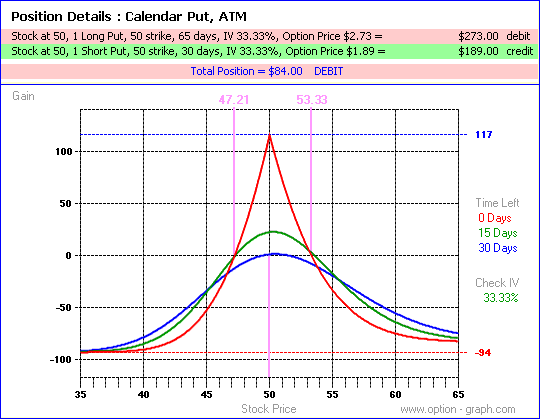Options Strategy Delta Neutral Trading
Post on: 20 Апрель, 2015 No Comment

Options Strategy: Delta Neutral Trading 0 comments
Jan 19, 2013 10:50 AM
The delta neutral usually describes a spread strategy involving a long and a short position — when the combined values of each are at or near zero.
The term can involve a number of different strategies, but the concept of delta neutrality is always the central theme. Other than spreads, a delta neutral can also consist of an option position and 100 shares of the underlying stock. This creates an equivalent stock position or a synthetic (an options-based of stock-and-options position that changes value just like 100 shares of stock). In theory, the delta neutral position eliminates risk on both the long and short side. Realistically, this changes as soon as values begin to move or when implied volatility changes.
A mistake for options traders who do not want exercise is to open delta neutral spreads with two short options, a call and a put. The neutrality of offsetting exercise risk does not eliminate exercise exposure, it only ensures that one side or the other will be in the money before expiration. This may be true even when different strikes are used. For example, when stock is at 43, a trader sells a 45 call and a 40 put. Both options are out of the money, and the exposure is moved above 45 or below 40 by the value of the sold options. This is a fine theory, but what happens when the stock price moves quickly and substantially? One side of the delta neutral position ends up in the money and has to be closed at a loss, rolled forward, or allowed to exercise. Many of the elegant theories of risk-less option positions end up losing a lot of money because conditions change.
This risk is made even worse with a short straddle. Because both call and put have the same strike, one or the other is always going to be in the money. Unless the exposed side is closed or rolled before exercise occurs, it will be very difficult to make a short straddle profitable. The position is delta neutral if the stock price is near the common strike at expiration. But the delta neutral status only works out well if the stock’s price moves exactly to the strike and never evolves above or below. That does not happen in the expensive, real world.
Delta neutral trading makes more sense when synthetic long or short stock is used. You can eliminate risk even for synthetic short stock (a long put and a short call at the same strike). By owning 100 shares of the underlying, the call becomes a covered call and the synthetic position is made safer. This is an example of a highly conservative delta neutral position. Because the cost of the long put is offset by the premium from the short call, the option cost is close to zero (it may even by a small credit). The market risk in the short call is eliminated through ownership of 100 shares. The call can be closed at a profit as long as stock remains at or below strike. The long put can be closed to offset point-for-point declines in the stock, or exercised to sell stock at the strike. Because the net option cost is virtually zero, there is no need to worry about time decay in the put.
tinyurl.com/aqeeops to learn more.
I also offer a totally free newsletter subscription if you are interested in a periodic update of news and information and a summary of performance in the virtual portfolio that I manage. Join at Free Newsletter I look forward to having you as a subscriber.
Instablogs are blogs which are instantly set up and networked within the Seeking Alpha community. Instablog posts are not selected, edited or screened by Seeking Alpha editors, in contrast to contributors’ articles.














